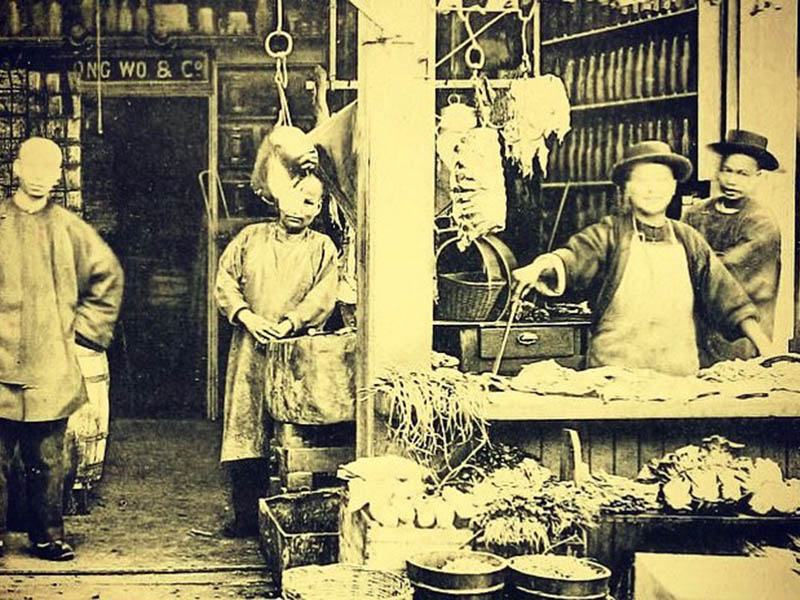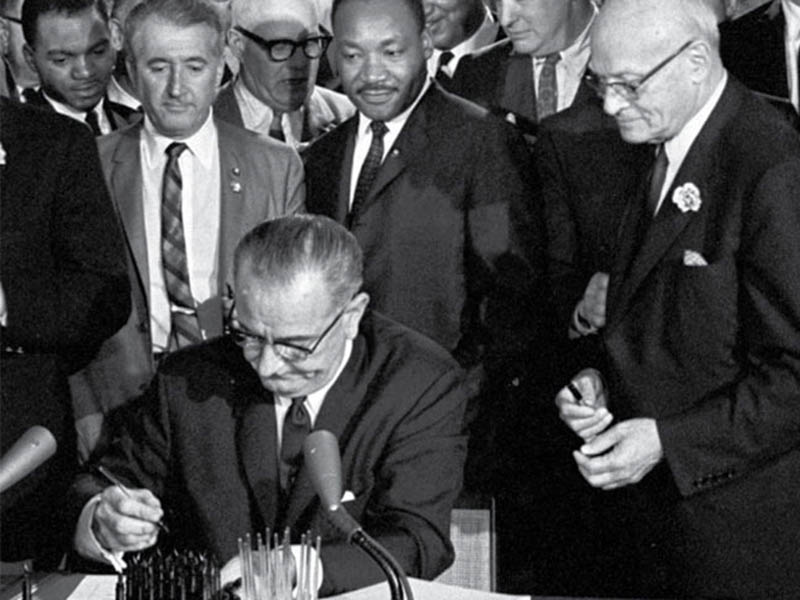Able to vote:
White property owners
Most women
Men without property
Most African Americans
1792
No need to own property in New Hampshire
New Hampshire becomes the first state to eliminate its property requirements, thereby extending the right to vote to almost all free white men.
Able to vote:
White male property owners
All Women
Most African Americans
1807
New Jersey women banned from voting
New Jersey, where some women and African Americans had been permitted to vote since 1776, changed its laws to allow only tax-paying, white male citizens the right to vote.
Able to vote:
All White men
All Women
Most African Americans
1856
All states allows all white men to vote
North Carolina is the last state to remove property ownership as a requirement to vote.
Able to vote:
White men
Some African American men
All Women
1870
Vote cannot be denied because of race, explicitly - so other discriminatory tactics used
15th Amendment passed. It states that the right to vote cannot be denied by the federal or state governments based on race. However, soon after, some states begin to enact measures such as voting taxes and literacy tests that restrict the actual ability of African Americans to register to vote. Violence and other intimidation tactics are also used.
Able to vote:
White men
Some African American men
All Women
Native Americans
1876
Indigenous people cannot vote
The Supreme Court rules that Native Americans are not citizens as defined by the 14th Amendment and, thus, cannot vote.
1890
Wyoming legislates female suffrage
Wyoming admitted to statehood and becomes first state to legislate voting for women in its constitution.
Able to vote:
White men White women Some African Americans
1920
Right to vote extended to women
19th Amendment passed, giving women the right to vote in both state and federal elections.
Able to vote:
White men
White women
Some African Americans
Native Americans
Asians
1924
Again, citizenship granted but voting denied
The Indian Citizenship Act grants citizenship to Native Americans, but many states nonetheless make laws and policies that prohibit Native Americans from voting.
1926
State violence used to prevent people from exercising their right to vote
While attempting to register to vote in Birmingham, Alabama, a group of African American women are beaten by election officials.
Able to vote:
White men
White women
Some African Americans
Some Native Americans
Asians
1947
Legal barriers to Native American voting removed
Miguel Trujillo, a Native American and former Marine, sues New Mexico for not allowing him to vote. He wins and New Mexico and Arizona are required to give the vote to all Native Americans.
Able to vote:
White men White women Some African Americans Some Native Americans Asians
1952
People with Asian ancestry can vote
McCarran-Walter Act grants all people of Asian ancestry the right to become citizens.
1964
No tax required to vote
24th Amendment passed. It guarantees that the right to vote in federal elections will not be denied because of failure to pay any tax.
Able to vote:
White men White women African Americans Native Americans Asians
1966
After the legal change, struggle continues for social change
Civil rights activist James Meredith is wounded by a sniper during a solo “Walk Against Fear” voter registration march between Tennessee and Mississippi. The next day, nearly 4,000 African Americans register to vote. Other civil rights leaders such as Martin Luther King, Jr. and Stokely Carmichael continue the march while Meredith heals. Meredith re-joins the march at its conclusion in Mississippi.
Able to vote:
White men White women African Americans Native Americans Asians Citizens over the age of 18
1975
Voting materials in various languages
Amendments to the Voting Rights Act require that certain voting materials be printed in languages besides English so that people who do not read English can participate in the voting process.
Able to vote:
White men
White women
African Americans
Native Americans
Asians
Citizens over the age of 18
Residents of US colonies
Able to vote:
White men
White women
African Americans
Native Americans
Asians
Citizens over the age of 18
Residents of US colonies
Felons
2001
Debate - Should voting rights be taken away from felons? For how long?
The National Commission on Federal Election Reform recommends that all states allow felons to regain their right to vote after completing their criminal sentences.
Nearly four million US citizens cannot vote because of past felony convictions. In most states, felons are prohibited from voting while they are in prison or on parole. In some states, especially in the South, a person with a felony conviction is forever prohibited from voting in that state. These laws are a legacy of post-Civil War attempts to prevent African Americans from voting. Ex-felons are largely poor and disproportionately of colour.
2002
Massive voting reform
To solve election inconsistency with more federal voting standards, the Help America Vote Act (HAVA) is passed in response to the disputed 2000 presidential election. Massive voting reform effort requires states to comply with a federal mandate for provisional ballots, disability access, centralised, computerised voting lists, electronic voting and the requirement that first-time voters present identification before voting.





















